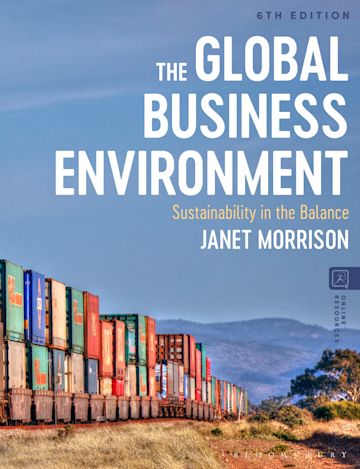how to balance economic growth and development with the urgent need for environmental sustainability. As a country known for its innovation and progress, America stands at a crossroads where environmental stewardship becomes paramount. This article explores the delicate equilibrium between fostering economic growth and preserving the environment for future generations.
Balancing economic growth and development with the imperative of environmental sustainability represents one of the defining challenges of our time. In the United States, a nation celebrated for its spirit of innovation and relentless pursuit of progress, this challenge takes on added significance. America now finds itself at a pivotal juncture where environmental stewardship must be elevated to a central role in shaping its future trajectory.
In this era of rapidly advancing technology and global interconnectedness, the traditional view of economic growth no longer exists in isolation from environmental concerns. The decisions made today regarding resource consumption, energy generation, and industrial practices have far-reaching consequences not only for the nation but for the entire planet. Recognizing this, America stands as a steward of not just its own natural heritage but also a guardian of the Earth’s fragile ecosystems.
This article delves deep into the intricate balance that must be struck between fostering economic growth and preserving the environment for future generations. It acknowledges that while economic growth is vital for prosperity and well-being, it must be achieved in a manner that is sustainable and environmentally responsible.
The pursuit of this equilibrium entails reimagining industries and adopting cleaner, more sustainable technologies. It means transitioning away from reliance on fossil fuels and embracing renewable energy sources. It involves advocating for policies that incentivize eco-friendly practices and promote responsible resource management. Additionally, it calls for the nurturing of eco-entrepreneurship, where innovative solutions are developed to address environmental challenges while fostering economic growth.
Importantly, it also involves a shift in societal values and consumer behavior. Citizens must become more conscious of their environmental footprint, making sustainable choices in their daily lives. This shift can, in turn, influence market forces, encouraging businesses to adopt more environmentally friendly practices in response to consumer demand.
Furthermore, the article explores the role of government, emphasizing the need for comprehensive policies that strike a balance between economic development and environmental preservation. Such policies can encompass a range of measures, from incentivizing green industries and research to regulating emissions and protecting vital natural habitats.
Ultimately, achieving this balance is not a simple task, but it is an essential one. The choices made today will shape the legacy America leaves for future generations. By embracing the challenge of environmental sustainability while continuing to drive innovation and economic growth, America can lead the way in demonstrating that prosperity and ecological responsibility are not opposing forces but, when thoughtfully managed, can coexist to create a better, more sustainable future for all.
Explore this link for a more extensive examination of the topic: The National Security Strategy of the United States of America

The world is grappling with pressing environmental issues, including climate change, deforestation, habitat loss, and pollution. These challenges transcend borders, affecting not only the environment but also economies, communities, and public health.
Indeed, the world finds itself at a critical juncture, contending with a host of urgent environmental issues that demand our immediate attention and collective action. Among these pressing concerns, climate change stands out as a paramount global challenge. It is altering weather patterns, intensifying natural disasters, and threatening the very stability of our ecosystems.
Deforestation, a direct consequence of human activity, poses a significant threat to our planet’s biodiversity and ecological balance. As vast forests disappear, countless species lose their habitats, and the delicate web of life unravels. Furthermore, the repercussions extend far beyond the loss of biodiversity; deforestation contributes to climate change by releasing carbon dioxide into the atmosphere, exacerbating the global warming crisis.
Habitat loss, driven by urbanization and land conversion for agriculture and industry, disrupts ecosystems and pushes countless species to the brink of extinction. The intricate interdependence of species in ecosystems becomes increasingly fragile, jeopardizing the stability and resilience of these intricate systems.
Pollution, whether it’s in the form of air, water, or soil contamination, has far-reaching consequences for both human and environmental health. Toxic chemicals and pollutants degrade the quality of our air and water, harming not only ecosystems but also public health. The poisoning of our natural resources directly impacts the well-being of communities around the world.
What’s critical to understand is that these environmental challenges know no borders. They transcend national boundaries, affecting every corner of the globe. The consequences of climate change, for instance, are felt in the form of extreme weather events, rising sea levels, and shifting agricultural patterns, impacting economies and livelihoods in both developed and developing nations.
Addressing these challenges requires a united effort on a global scale. International cooperation, agreements, and collective action are essential components of any effective response. Nations must come together to reduce greenhouse gas emissions, protect vital ecosystems, and implement sustainable practices that prioritize environmental health.
Moreover, the solutions to these issues extend beyond government policies and international agreements. They involve individuals, communities, businesses, and organizations. Sustainable practices, conservation efforts, and responsible consumer choices can collectively make a significant difference in combating environmental degradation.
In conclusion, the environmental issues we face today are complex, multifaceted, and interconnected. They have profound implications for not only the natural world but also human societies, economies, and public health. Recognizing the urgency of these challenges and acting collectively and responsibly is paramount to ensure a sustainable and harmonious future for our planet and all its inhabitants.
If you’d like to dive deeper into this subject, there’s more to discover on this page: G20 Bali Leaders’ Declaration | The White House

Environmental stewardship is not just about protecting nature; it’s about safeguarding the foundations of our economy. Sustainable practices can lead to resource efficiency, innovation, and job creation in emerging green industries.
Environmental stewardship transcends the preservation of natural beauty; it holds the key to securing the very pillars of our economic well-being. The adoption of sustainable practices not only shields our environment but also fosters a thriving economy through resource optimization, innovation, and the emergence of dynamic green sectors.
Resource efficiency lies at the heart of environmental stewardship. By minimizing waste and optimizing resource use, we not only conserve precious natural resources but also reduce operational costs for businesses and industries. For instance, energy-efficient technologies and practices not only lower greenhouse gas emissions but also lead to substantial savings on energy bills, benefiting both the environment and the bottom line of businesses.
Furthermore, sustainability fuels innovation. The drive to find eco-friendly alternatives and more efficient processes has spurred a wave of technological advancements. From renewable energy sources to waste reduction techniques, sustainable innovation has led to breakthroughs that transcend environmental benefits. These innovations often have applications beyond the green sector, resulting in improved products, increased competitiveness, and job creation in diverse industries.
The emergence of green industries is a testament to the economic potential of environmental stewardship. Sectors such as clean energy, sustainable agriculture, and eco-tourism have witnessed significant growth, generating employment opportunities and economic prosperity. This shift towards sustainability not only diversifies the economy but also strengthens its resilience in the face of global challenges.
Moreover, sustainable practices enhance a company’s reputation and appeal to environmentally conscious consumers. As sustainability becomes a more prominent factor in purchasing decisions, businesses that prioritize eco-friendly practices can access new markets and build brand loyalty, ultimately boosting their competitiveness and profitability.
In summary, environmental stewardship is not a singular pursuit; it’s a multifaceted strategy that safeguards nature while bolstering economic foundations. Through resource efficiency, innovation, and the growth of green industries, sustainability paves the way for a more prosperous and resilient future. By recognizing the interdependence of our environment and economy, we can build a sustainable and thriving world for generations to come.
Should you desire more in-depth information, it’s available for your perusal on this page: Ghana: Balancing economic growth and depletion of resources

Recognizing that the environment is a complex web of interdependent systems highlights the need for responsible management. Altering one part of this delicate balance can have ripple effects on ecosystems and communities.
Recognizing that the environment is a complex web of interdependent systems is a fundamental step towards understanding the profound importance of responsible environmental management. In this intricate tapestry of life on Earth, every species, habitat, and element plays a critical role, and any alteration to one part of this delicate balance can set off a chain reaction with far-reaching consequences, affecting ecosystems and communities alike.
Biodiversity and Ecosystem Services: The web of life encompasses a vast array of species, each with unique roles and contributions. Biodiversity not only enriches the natural world but also provides tangible benefits to human societies. For instance, pollinators like bees are essential for agriculture, and forests help regulate climate and purify air and water. Responsible environmental management ensures the preservation of these ecosystem services.
Climate Change Mitigation: The interconnectedness of the environment is particularly evident in the context of climate change. Alterations in one part of the world, such as deforestation or increased greenhouse gas emissions, can trigger global consequences. Responsible management involves reducing carbon emissions, protecting forests, and mitigating climate change impacts to safeguard our planet’s delicate equilibrium.
Water Resources: The interdependence of ecosystems extends to water resources. Disrupting natural water cycles through pollution or excessive extraction can lead to severe consequences, affecting drinking water availability, agriculture, and aquatic habitats. Responsible water management aims to maintain the equilibrium of these vital systems.
Ocean Health: Oceans are a prime example of interconnectedness. Overfishing or pollution in one region can disrupt ocean ecosystems and impact global fisheries. Responsible marine management is essential to preserve not only biodiversity but also the livelihoods of coastal communities that depend on healthy oceans.
Land Use and Habitat Preservation: Land use decisions, such as urban expansion or agricultural expansion, can fragment habitats and disrupt migratory patterns of wildlife. Responsible land management strives to balance human needs with the preservation of critical habitats, ensuring the survival of diverse species.
Human Well-being: The consequences of disrupting environmental balance are not limited to ecosystems alone. They also have profound effects on human well-being. Air and water pollution can lead to health issues, while loss of biodiversity can affect food security. Responsible management protects both natural systems and human communities.
Resilience to Natural Disasters: An understanding of interdependence is crucial for building resilience to natural disasters. Ecosystems like wetlands and mangroves act as natural buffers against floods and storms. Responsible disaster management involves protecting these natural defenses and reducing vulnerability.
Global Responsibility: The realization of interconnectedness extends globally. Actions taken in one part of the world, whether it’s conservation efforts or resource consumption, can impact ecosystems and communities across continents. Responsible environmental management transcends borders and requires international cooperation.
In conclusion, acknowledging the intricate web of interdependence within the environment underscores the urgency and importance of responsible management. It’s a reminder that our actions, no matter how local or seemingly insignificant, have the potential to create ripples across the planet. Responsible environmental stewardship is not just a matter of ethical obligation; it’s an imperative for the preservation of our planet’s diversity, stability, and the well-being of all its inhabitants.
For a comprehensive look at this subject, we invite you to read more on this dedicated page: In the spirit of nature, everything is connected | IUCN

The move towards clean, renewable energy sources, such as solar, wind, and hydroelectric power, is essential for reducing greenhouse gas emissions and mitigating climate change. American innovation and investment in these technologies can lead the way.
The transition to clean, renewable energy sources represents a pivotal step in addressing the urgent global challenge of climate change. This shift not only offers the potential to significantly reduce greenhouse gas emissions but also presents a multitude of opportunities for American leadership, innovation, and economic growth.
Reducing Greenhouse Gas Emissions: Fossil fuels have long been a primary source of energy, but they come with the significant drawback of emitting carbon dioxide and other pollutants into the atmosphere. Transitioning to renewable energy sources like solar, wind, and hydroelectric power is crucial for reducing these emissions, which are the primary drivers of climate change. By generating energy without the release of harmful greenhouse gases, the United States can substantially contribute to global efforts to combat climate change.
Energy Independence and Security: Relying on renewable energy sources enhances energy security by reducing dependence on foreign oil and volatile global energy markets. Domestically sourced renewable energy helps stabilize energy prices and insulates the nation from geopolitical tensions and supply disruptions.
Technological Advancements: American innovation has already played a significant role in advancing renewable energy technologies. Continued investment in research and development can lead to breakthroughs that make renewable energy more efficient, affordable, and accessible. This innovation not only benefits the United States but also creates opportunities for exporting clean energy solutions to the world.
Job Creation: The renewable energy sector has the potential to become a significant driver of job growth in the United States. Solar and wind farms, as well as the manufacturing and installation of renewable energy systems, offer employment opportunities across the country. By investing in the renewable energy industry, the U.S. can stimulate economic growth and support job creation in both urban and rural areas.
Resilience and Infrastructure: Transitioning to renewable energy sources can enhance the resilience of the nation’s energy infrastructure. Distributed renewable energy systems, such as rooftop solar panels and small-scale wind turbines, can reduce the vulnerability of the grid to extreme weather events and cyberattacks.
Global Leadership: By leading the transition to renewable energy, the United States can set an example for other nations and play a pivotal role in international climate negotiations. American leadership can encourage greater global cooperation in addressing climate change, as well as promote clean energy adoption worldwide.
Environmental Benefits: Beyond mitigating climate change, renewable energy sources have several environmental benefits. They reduce air and water pollution, protect ecosystems, and conserve natural resources. This, in turn, supports biodiversity and ensures cleaner air and water for future generations.
In conclusion, the move towards clean, renewable energy sources is not just a response to environmental concerns but a strategic opportunity for the United States. By investing in and embracing these technologies, the nation can simultaneously reduce its carbon footprint, bolster its energy security, stimulate economic growth, and demonstrate global leadership in the fight against climate change. The transition to renewable energy is not merely a shift in energy sources but a transformative journey toward a more sustainable and resilient future.
Don’t stop here; you can continue your exploration by following this link for more details: G20 Bali Leaders’ Declaration | The White House

Preserving natural habitats and protecting biodiversity is critical. Initiatives to conserve and restore ecosystems, such as reforestation and wildlife conservation, help maintain the balance of nature.
Preserving natural habitats and protecting biodiversity is not only critical but also an ethical and ecological imperative for the well-being of our planet and future generations. As human activities continue to exert pressures on the environment, initiatives to conserve and restore ecosystems, such as reforestation and wildlife conservation, play an increasingly vital role in maintaining the delicate balance of nature.
Biodiversity as a Genetic Reservoir: Biodiversity is akin to a genetic reservoir for life on Earth. Every species, from the smallest microorganism to the largest mammals, contributes to the intricate web of life. Preserving this diversity ensures that genetic material for adaptation and evolution remains available for future generations. It’s not just about protecting the species we see today but also those that may hold the key to solving future ecological challenges.
Ecosystem Services: Ecosystems provide a multitude of services that are essential for human survival and well-being. These services include pollination of crops by insects, regulation of climate, purification of water, and the provision of food and medicine. When we conserve and restore ecosystems, we are essentially safeguarding these vital services, which have direct impacts on human health, food security, and economic stability.
Climate Change Mitigation: Natural habitats, especially forests, serve as carbon sinks. They absorb and store carbon dioxide from the atmosphere, helping mitigate climate change. Initiatives like reforestation not only combat deforestation but also contribute to global efforts to reduce greenhouse gas emissions. The preservation of peatlands and wetlands also plays a critical role in carbon sequestration.
Economic Benefits: Conserving and restoring natural habitats can have tangible economic benefits. For example, ecotourism can generate revenue for local communities while protecting wildlife and their habitats. Sustainable forestry practices can provide a steady supply of timber while ensuring the long-term health of forests.
Human Well-being: The presence of diverse and healthy ecosystems has a direct impact on human well-being. People living near natural habitats often rely on them for their livelihoods, be it through fishing, agriculture, or the collection of non-timber forest products. Preserving these ecosystems helps secure the livelihoods of vulnerable communities.
Resilience to Environmental Shocks: A rich biodiversity ensures ecosystem resilience. Diverse ecosystems are often better equipped to withstand environmental shocks, such as disease outbreaks or extreme weather events. This resilience is crucial for maintaining stable food systems and preventing ecological collapse.
In essence, initiatives to preserve and restore natural habitats and protect biodiversity are not just about safeguarding the natural world; they are about securing the future of humanity itself. It is a collective responsibility to act as stewards of the planet, recognizing the interconnectedness of all life forms and the profound impact our actions have on the delicate balance of nature. By prioritizing these efforts, we can ensure a sustainable and harmonious coexistence with the natural world.
Should you desire more in-depth information, it’s available for your perusal on this page: G20 Bali Leaders’ Declaration | The White House

Responsible urban planning and development are essential for minimizing the ecological footprint of growing cities. Smart growth strategies can reduce sprawl and promote sustainable, livable communities.
Responsible urban planning and development are essential for minimizing the ecological footprint of growing cities. Smart growth strategies can reduce sprawl and promote sustainable, livable communities. By concentrating development in existing urban areas, we can preserve valuable natural landscapes, reduce the need for long commutes, and lower emissions from transportation.
Moreover, responsible urban planning goes beyond just environmental considerations. It also plays a crucial role in fostering social equity. Thoughtful development can create accessible housing, improve public transportation, and enhance community spaces, thereby improving the overall quality of life for urban residents.
Additionally, when cities adopt sustainable urban planning practices, they become more resilient in the face of climate change. Well-designed urban areas are better equipped to handle extreme weather events and rising temperatures, ensuring the safety and well-being of their inhabitants.
Ultimately, responsible urban planning is a multifaceted approach that addresses environmental, social, and economic challenges. It recognizes that cities are hubs of human activity and innovation and, when planned with care, can serve as models of sustainability and inclusivity for the future.
You can also read more about this here: Environmental Stewardship and Sustainability – JMU

Transitioning to a circular economy, where resources are reused, recycled, and repurposed, can reduce waste and minimize the environmental impact of production and consumption.
Transitioning to a circular economy represents a fundamental shift in the way we produce, consume, and manage resources, and it holds immense promise for addressing pressing environmental challenges. In a circular economy, the principles of sustainability and responsible resource management take center stage, offering a holistic approach to reducing waste and lessening the environmental footprint of our actions.
One of the key aspects of this transition is the emphasis on resource efficiency. Rather than following a linear “take-make-dispose” model, where resources are extracted, transformed into products, and eventually discarded as waste, a circular economy promotes a closed-loop system. In this system, resources are continually reused, recycled, and repurposed, creating a sustainable cycle that reduces the need for new raw materials and lowers the burden on natural ecosystems.
Recycling plays a pivotal role in this transformation. By diverting materials from landfills and incineration, recycling not only conserves valuable resources but also reduces greenhouse gas emissions associated with waste disposal. Moreover, it reduces the pressure on ecosystems that are often exploited for resource extraction, such as forests and mineral reserves.
In addition to recycling, product design becomes a critical component of a circular economy. Products are designed with longevity and ease of repair and disassembly in mind, making it simpler to recover and reuse materials at the end of their life cycles. This shift encourages manufacturers to take responsibility for the entire lifecycle of their products, from production to disposal, thereby fostering a more sustainable and accountable approach to business.
Furthermore, the circular economy promotes the sharing and leasing of goods and services, reducing the demand for ownership and the associated overconsumption of resources. Concepts like car-sharing, tool libraries, and collaborative consumption platforms exemplify this trend, encouraging a culture of access over ownership.
The benefits of transitioning to a circular economy extend far beyond waste reduction. It can lead to job creation, promote innovation in sustainable technologies, and enhance resource security by reducing reliance on finite resources. Additionally, it aligns with global efforts to combat climate change, as a circular economy can significantly lower carbon emissions by decreasing the demand for resource-intensive processes.
In essence, transitioning to a circular economy represents a profound shift toward a more sustainable and responsible way of living on our planet. It embodies the idea that environmental protection and economic prosperity can go hand in hand, offering a path towards a more resilient and environmentally friendly future for generations to come.
To expand your knowledge on this subject, make sure to read on at this location: Principles for a sustainable circular economy – ScienceDirect

Promoting environmental education and awareness helps individuals and communities understand the importance of sustainable practices and empowers them to make informed choices.
Promoting environmental education and awareness is not just about imparting knowledge; it’s a powerful catalyst for change that resonates with individuals and communities on multiple levels. This approach goes beyond simply telling people what they should do to protect the environment; it equips them with the understanding and motivation needed to embrace sustainable practices and make informed choices.
At its core, environmental education fosters a deep connection between people and the natural world. It instills a sense of wonder and appreciation for the environment, helping individuals recognize the intrinsic value of nature beyond its utilitarian aspects. This emotional connection often leads to a genuine desire to protect and preserve the planet for future generations.
Moreover, environmental education provides a comprehensive view of the interconnectedness of ecological systems and human societies. It illustrates how our actions impact not only the environment but also our own well-being. This holistic perspective helps individuals see that sustainable practices aren’t just about protecting nature; they’re also about ensuring a healthier, more resilient future for ourselves and our communities.
Empowerment is a central theme in environmental education. It empowers individuals to take meaningful action by equipping them with the knowledge and skills to make informed choices. Whether it’s reducing energy consumption, conserving water, supporting sustainable agriculture, or advocating for policy change, informed individuals are better equipped to contribute to positive environmental outcomes.
Environmental education is not limited to the classroom. It extends to communities, where it can drive grassroots initiatives and collective action. When people within a community share a common understanding of environmental issues, they can work together to implement local solutions, from tree-planting campaigns to waste reduction programs. This bottom-up approach not only enhances environmental stewardship but also strengthens social bonds and community resilience.
Furthermore, promoting environmental education is an investment in the future. As the next generation grows up with a strong environmental ethic, they carry that mindset into their adult lives and decision-making processes. This generational shift can lead to more sustainable practices becoming the norm, reducing the environmental impact of societies over time.
In conclusion, promoting environmental education and awareness is a multifaceted endeavor that fosters not only knowledge but also a sense of connection, empowerment, and long-term commitment. It transforms individuals and communities into active stewards of the environment, ensuring that the importance of sustainable practices continues to resonate across generations. In an era when environmental challenges are pressing, this investment in education represents a crucial step toward a more sustainable and harmonious coexistence with the planet.
To expand your knowledge on this subject, make sure to read on at this location: Balancing Chip Industry Growth and Environmental Sustainability …

Effective environmental policies and regulations are crucial. Government initiatives can incentivize sustainable practices, impose penalties for environmental violations, and support research and development in green technologies.
Effective environmental policies and regulations play a pivotal role in shaping a sustainable future for our planet. They are the cornerstone upon which societies can build a framework for responsible environmental stewardship. Here’s a more detailed exploration of their significance and impact:
Incentivizing Sustainable Practices: Environmental policies have the power to drive positive change by offering incentives for businesses and individuals to adopt sustainable practices. Through mechanisms like tax incentives, subsidies, and grants, governments can encourage the adoption of clean technologies, energy efficiency, and eco-friendly practices. These incentives not only benefit the environment but also stimulate economic growth and innovation.
Imposing Penalties for Environmental Violations: To ensure compliance and accountability, environmental regulations include penalties for violations. These penalties discourage harmful activities such as pollution, deforestation, and wildlife trafficking. By imposing fines, legal action, or other sanctions, governments deter individuals and industries from engaging in practices that harm ecosystems and public health.
Supporting Research and Development: Governments can play a vital role in advancing environmental protection by investing in research and development (R&D) for green technologies and sustainable solutions. Funding for R&D initiatives fosters innovation in renewable energy, waste reduction, and resource conservation. It accelerates the development of technologies that can replace or improve upon environmentally damaging alternatives.
Setting Standards and Targets: Environmental policies often establish clear standards and targets for emissions reductions, resource conservation, and pollution control. These standards provide a roadmap for businesses and industries to follow, ensuring a level playing field and a consistent commitment to sustainability across the board. Standards can also evolve over time to reflect advances in environmental science and technology.
Public Awareness and Education: Effective environmental policies go hand in hand with public awareness campaigns and education. Governments can use their influence to educate citizens about the importance of environmental protection, conservation, and sustainable living. Well-informed citizens are more likely to support and participate in eco-friendly initiatives.
International Cooperation: In an increasingly interconnected world, environmental policies also extend to international cooperation. Governments collaborate on global agreements and treaties to address transboundary environmental issues such as climate change, biodiversity loss, and marine pollution. These international efforts underscore the shared responsibility of nations in protecting the planet.
In conclusion, effective environmental policies and regulations serve as the foundation upon which sustainable practices are built. They provide a framework for incentivizing positive behaviors, discouraging harmful activities, fostering innovation, and ensuring a collective commitment to preserving our natural world. It is through thoughtful policy development and enforcement that we can pave the way for a greener, more sustainable future for generations to come.
For additional details, consider exploring the related content available here Economic Growth and Environmental Sustainability

America’s history is marked by a tradition of innovation and problem-solving. This legacy can be harnessed to address environmental challenges while promoting economic growth. From Silicon Valley’s tech advancements to the Midwest’s agricultural innovations, the nation has a wealth of talent and resources to draw upon.
America’s history is indeed a testament to its tradition of innovation and problem-solving. This legacy, deeply embedded in the nation’s DNA, offers a unique and promising avenue to confront one of the most pressing issues of our time: environmental sustainability.
One of the remarkable aspects of American innovation is its ability to adapt to changing circumstances. The same spirit that fueled westward expansion and the industrial revolution now stands ready to tackle environmental challenges. Silicon Valley, for example, has been at the forefront of technological advancements that are revolutionizing the way we generate and consume energy. Renewable energy sources, such as solar and wind power, have become not just viable but economically competitive options. Electric vehicles are rapidly becoming the norm, reducing carbon emissions and reliance on fossil fuels.
In the heartland of America, the agricultural sector is leveraging innovation to address environmental concerns. Sustainable farming practices, precision agriculture, and the development of drought-resistant crops are not only increasing productivity but also reducing the environmental footprint of agriculture. These innovations are critical in ensuring food security for a growing global population while minimizing the impact on natural resources.
Furthermore, the country’s extensive research institutions, from top-tier universities to government agencies, play a pivotal role in advancing environmental solutions. Climate science, renewable energy research, and environmental conservation efforts are yielding insights and technologies that can be applied not only domestically but also globally to combat climate change and protect ecosystems.
Harnessing America’s innovation legacy for environmental sustainability is not just about addressing ecological concerns; it’s also about promoting economic growth. The transition to a more sustainable economy has the potential to create millions of jobs in clean energy, conservation, and sustainable agriculture. It can drive economic growth and position the nation as a leader in the emerging green industries of the future.
However, this transformation requires not only technological innovation but also policy leadership and international cooperation. It demands a commitment to reducing greenhouse gas emissions, conserving natural resources, and safeguarding biodiversity. Collaboration with other nations is crucial in tackling global environmental challenges that transcend borders, such as climate change and ocean conservation.
In conclusion, America’s history of innovation and problem-solving offers a powerful tool to address environmental challenges while promoting economic growth. From technological hubs like Silicon Valley to the heartland’s agricultural innovations, the nation possesses a wealth of talent and resources to draw upon. By harnessing this legacy, embracing sustainability, and working collaboratively on a global scale, the United States can lead the way toward a more environmentally responsible and prosperous future.
Don’t stop here; you can continue your exploration by following this link for more details: Colombia: Leading the Path to Sustainability in Latin America

Conclusion
The concept of environmental stewardship in America embodies a profound responsibility to balance growth with sustainability. It’s an acknowledgment that the pursuit of economic progress should not come at the expense of our natural world. Instead, it’s a call to harness the nation’s creativity, resilience, and entrepreneurial spirit to lead the way in sustainable practices.
By fostering a culture of innovation, implementing responsible policies, and engaging in collective action, America can pave the path towards a future where growth and environmental sustainability coexist harmoniously. In doing so, the nation not only secures its economic prosperity but also fulfills its duty to protect the environment for generations to come. Balancing these imperatives is not just a challenge; it’s a defining opportunity for America in the 21st century.
For additional details, consider exploring the related content available here Ghana: Balancing economic growth and depletion of resources
More links
Don’t stop here; you can continue your exploration by following this link for more details: Colombia: Leading the Path to Sustainability in Latin America
